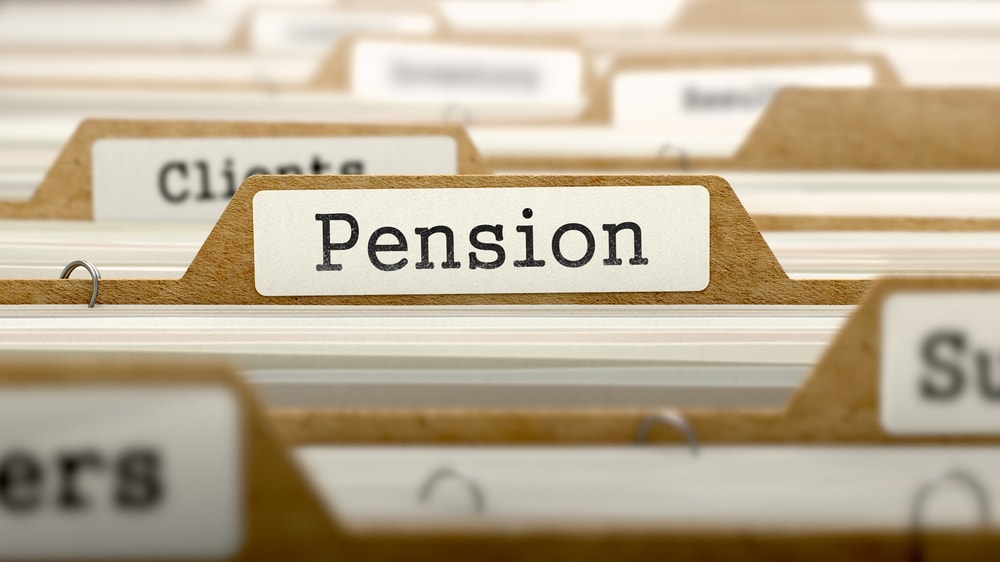Women in their early 20s have on average 5 per cent more in their pension pots than men, but by the time they reach 55 the average value of their pension pots is 46 per cent lower than their male counterparts, new data from Interactive Investor has revealed.
Interactive Investor’s data revealed that women’s pensions start to fall behind men’s in the 25-34 year old age bracket – around the age that many women have their first child at an average age of 29.
In contrast, becoming a father, which happens at age 33 on average for men, does not seem to slow down the growth rate in pension values.
The data showed that women aged 18 – 24 had an average pension value of £47,653, compared to the average for a man of the same age’s £45,091, representing a 5 per cent difference.
This gap in women’s favour was shown to swing the other way in the next age group, 25-34, as men’s average pension value slightly rises to £45,336 whilst women’s falls to £41,622, representing a 9 per cent difference in favour of men.
This trend continues through the data until the last age bracket of 65+ in which there is a 46 per cent difference between the genders, with men’s average pension value being reported as £293,353 and women’s at £158,821.
Interactive Investor head of pensions and savings, Becky O’Connor, commented: “The gender pension gap could be renamed the mothers’ pension gap.
“Evidence from interactive investor pension customers shows the gender pension gap doesn’t exist until the mid to late twenties age group.
“It’s no coincidence that this is the time that women tend to have their first child.
“The gap then becomes a chasm through the thirties age bracket and never recovers, with the growth in men’s pensions consistency outpacing the growth in the value of women’s pots.
“Women typically have just over half the pension pot value of men by the time they reach their mid-fifties – the point at which it becomes possible to access pension savings for the first time.”
O’Connor also explained why the pension gap tends to affect mothers more than fathers: “Maternity leave pay is generally more generous than paternity leave pay, even though couples can share leave during the first year of a child’s life.
“As a result, it rarely makes sense financial sense for a father to take substantial paternity leave unless his employer offers an unusually generous paternity pay scheme or the mother is so well paid that the father’s low paternity can be absorbed.
“Once a woman has taken time out of work and pension contributions, the damage is done, and it can be hard to reverse it. What is more likely to happen is that the pattern repeats.
“When it comes to subsequent children, it then makes sense again for the mother to take time out, compounding the problem.”
Interactive Investor’s data also discovered that women were less likely to have pension balances over £1m than men, with only 0.74 per cent of women having access to such a high sum compared with 2.78 per cent of men.
Latest News
-
'Pension tax lock' petition launched to protect savers from policy uncertainty
-
UK DB scheme surpluses rise £2bn amid PPF levy suspension
-
IHT plans could create 'considerable burdens' for schemes and representatives
-
Majority of UK adults worry about retirement savings, yet few prioritise pensions
-
Gradual retirement favoured over hard stop; Budget fears causing ‘snap decisions’
-
Smaller schemes face greater risk of losses due to climate change
The DB pension landscape
Pensions Age speaks to BlackRock managing director and head of its DB relationship management team, Andrew Reid, about the DB pensions landscape
Cyber Risk
In our latest Pensions Age video, Laura Blows discusses cyber risk with Aon partner Paul McGlone, and HSBC Bank Pension Trust (UK) trustee chief risk officer, Cheryl Payne.
Podcast: Who matters most in pensions?

In the latest Pensions Age podcast, Francesca Fabrizi speaks to Capita Pension Solutions global practice leader & chief revenue officer, Stuart Heatley, about who matters most in pensions and how to best meet their needs
Podcast: A look at asset-backed securities

Royal London Asset Management head of ABS, Jeremy Deacon, chats about asset-backed securities (ABS) in our latest Pensions Age podcast
© 2019 Perspective Publishing Privacy & Cookies










Recent Stories